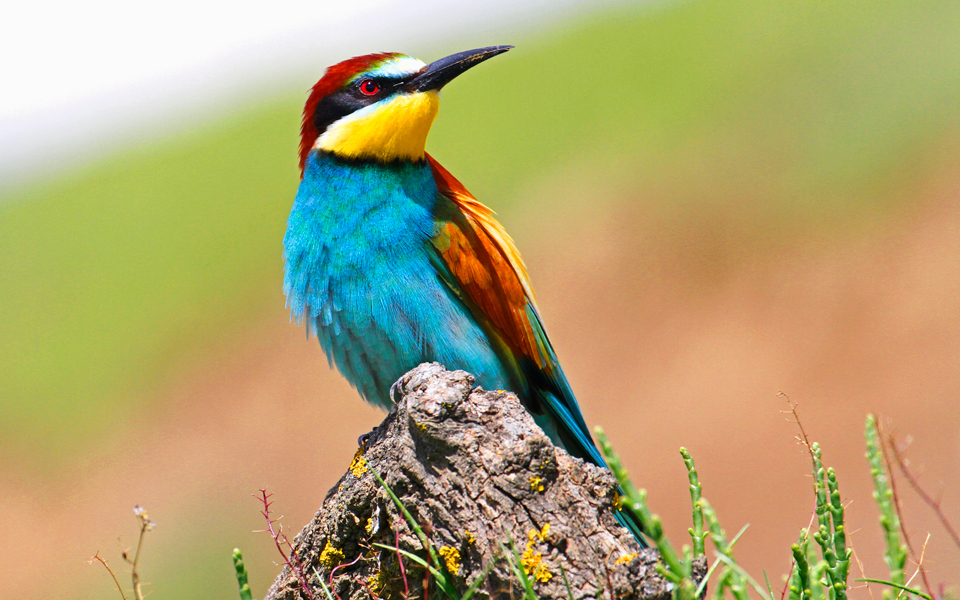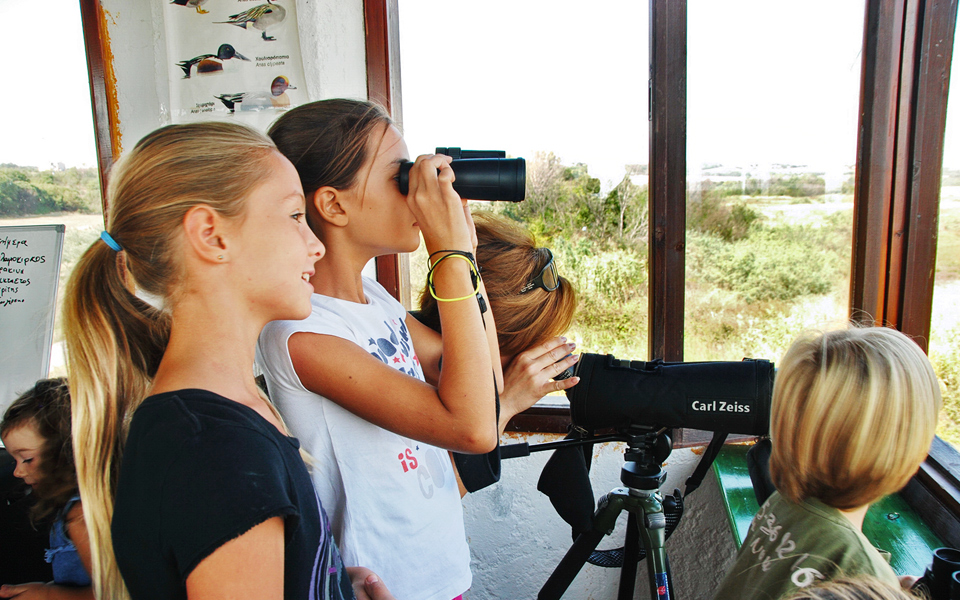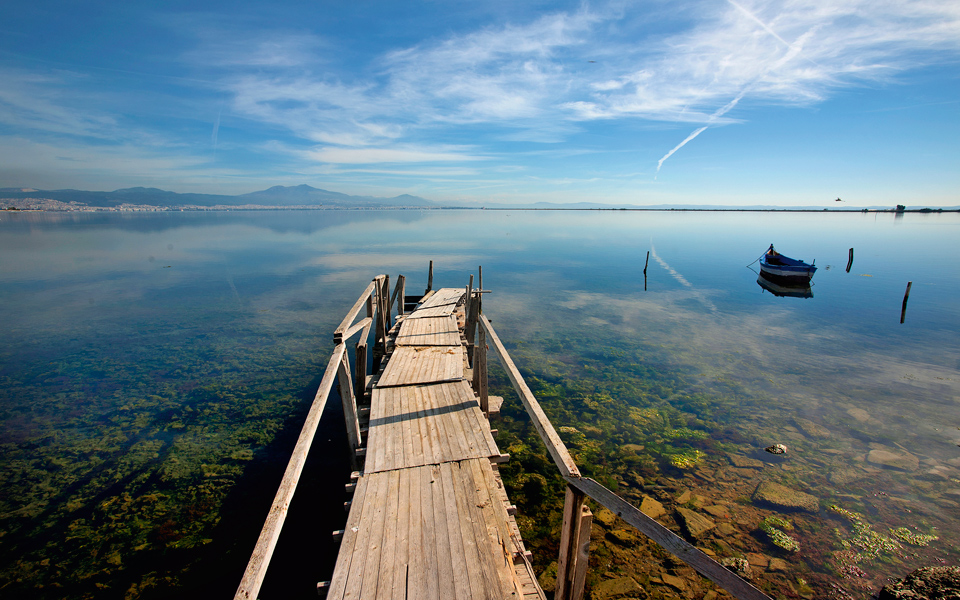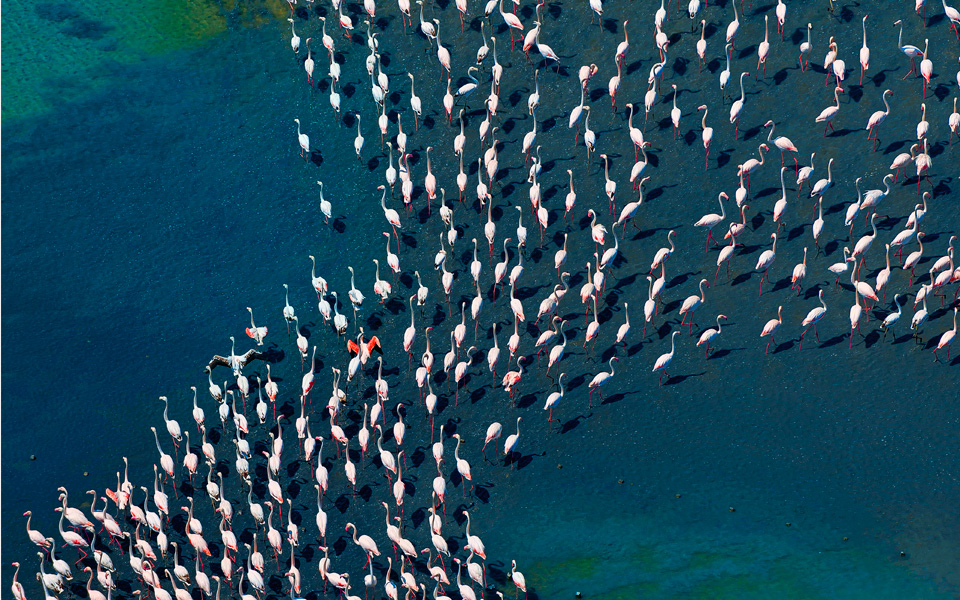Not half an hour from Thessaloniki is a verdant, wild paradise – the Axios Delta National Park, a haven for wildlife and a dream for birders. In a wetland complex of 340 square kilometers, the deltas of the rivers Axios and Aliakmon, the estuaries of the Gallikos and Loudias rivers, and the wetlands of Nea Agathoupoli and Alyki Kitrous create the perfect setting for broad biodiversity. A great variety of mammals, reptiles, amphibians and, very notably, birds thrive there amid 350 species of plants.
Birders can head straight for the Nea Agathoupoli bird-watching tower where they can observe (through telescopes and binoculars) some of the 295 species of birds that live or migrate through here. The halophytic (‘thriving in saline water’) vegetation provides the ideal environment for many species, some of which, such as the Dalmatian pelican and the glossy ibis, are rare. A great array of duck species (including Eurasian wigeons, mallards and northern pintails) winter here by the thousands. (The glamorous flamingoes, however, prefer to winter in the brackish waters of Kalohori.) There’s even a chance you might catch a glimpse of a white-tailed sea eagle – there are only a few pairs living in Greece.

© Lia Papadraga

© Markos Markoudis

© Alexandros Avramidis
Of all the mammals that have made the delta their home, it is the wild horses that make the greatest impression. Seen frolicking in the meadows and islands around the delta, these horses have an inspiring tale – they are the free and fortunate descendants of horses abandoned to the land with the advent of tractors and farm machinery in the 1960s. They sought out the lushness of the delta, where they thrived and bred – there are now several herds of them, integrated beautifully into the ecosystem.
These horses are one of 40 mammal species that make their homes in the park. Ground squirrels are another. There are also 18 reptile species – notably Europe’s largest population of Mediterranean tortoises – and nine species of amphibians.
The full splendor and diversity of the delta is by no means obvious from the highway. To get the most out of your visit, it’s best to start at the Axios Delta Information Center for a virtual tour as well as for maps and all kinds of useful information from the extremely helpful staff there. Areas of the park are included in the Natura 2000 network of European ecological regions and are also protected by the Ramsar Convention.
INFO
Information Center
Admission: Monday – Saturday, 10:00-15:00 • Tel.: (+30) 2310.794.811 • 25km from Thessaloniki – from the National Road heading south, take the turn off for Halastra, and consult your GPS or a helpful passerby.
Observation Tower
Admission: Wednesday – Saturday, 10:00-14:00 • No telephone.
50km from Thessaloniki – from the National Road heading south, turn off at the junction for Methoni and consult your GPS.










